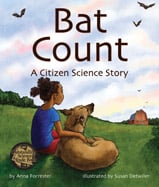Alignment to Standards for TX

| Grade | Number | Standard |
|---|---|---|
| 1 | 111.13 (1.9) (A) | is expected to collect and sort data. |
| 1 | 112.12 (b) (10) | organisms resemble their parents and have structures and processes that help them survive within their environments. |
| 1 | 112.12 (b) (10) (A) | external characteristics of an animal are related to where it lives, how it moves, and what it eats |
| 1 | 112.12 (b) (10) (C) | compare ways that young animals resemble their parents |
| 1 | 112.12 (b) (3) | information and critical thinking are used in scientific problem solving. |
| 1 | 112.12 (b) (9) | the living environment is composed of relationships between organisms and the life cycles that occur. |
| 1 | 112.12 (b) (9) (C) | interdependence among living organisms such as energy transfer through food chains and animals using plants for shelter. |
| 1 | 113.3. (1.3) | The student understands the concepts of time and chronology. |
| 2 | 112.13. (b) (9) | living organisms have basic needs that must be met for them to survive within their environment. |
| 2 | 112.13. (b) (9) (A) | identify the basic needs of plants and animals |
| 2 | 112.13. (b) (9) (C) | ways living organisms depend on each other and on their environments such as food chains |
| 3 | 112.14. (b) (10) | organisms undergo similar life processes and have structures that help them survive within their environments. |
| 3 | 112.14. (b) (9) | organisms have characteristics that help them survive and can describe patterns, cycles, systems, and relationships within the environments. |
| 3 | 112.14. (b) (9) (C) | describe environmental changes such as floods and droughts where some organisms thrive and others perish or move to new locations. |
| 4 | 112.15. (b) (10) | organisms undergo similar life processes and have structures that help them survive within their environment. |
| 5 | 112.16. (b) (10) | organisms undergo similar life processes and have structures that help them survive within their environments. |
| 5 | 112.16. (b) (9) | there are relationships, systems, and cycles within environments. |
| 5 | 112.16. (b) (9) (A) | organisms live and survive in their ecosystem by interacting with the living and non-living elements |
| 5 | 112.16. (b) (9) (C) | predict the effects of changes in ecosystems caused by living organisms, including humans, such as the overpopulation of grazers or the building of highways |
| K | 112.11 (b) (10) | organisms resemble their parents and have structures and processes that help them survive within their environments. |
| K | 112.11 (b) (10) (B) | identify parts of plants such as roots, stem, and leaves and parts of animals such as head, eyes, and limbs |
| PK | PK.2. (F) | begins to recognize that living things have similar needs for water, food, and air |